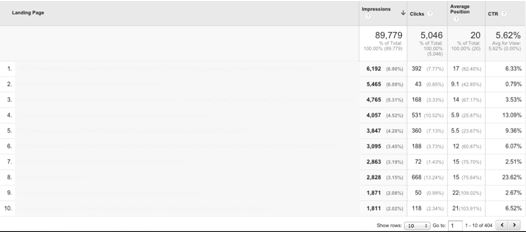It’s been well over a decade since all things digital marketing became “the thing you need to do,” and yet somehow companies still dump tens of thousands of dollars into SEO, PPC and content marketing and have no idea why, or even how to measure the results. If you opened a new location for your business, wouldn’t you scrutinize its profitability six ways to Sunday?
Of course you would. It’s supposed to give you a return on your investment. That’s how business works.
So, how is it that the most effective form of marketing is still a nebulous gray area?
I’m an advocate of challenging my clients and asking tough questions; I’m not paid to be your best friend, so I’m not going to pull any punches here either. To follow are three ideas to get you thinking about how your digital marketing strategy works for you.
1. Do you understand why your website exists?
Ask yourself (and be honest!) if you can explain why your website exists in one sentence. If you can do this easily, skip straight to part two. If you can’t, your visitors won’t know why it exists either, and this lack of clarity reflects in the site architecture, user experience and content.

If you’re confused, your audience will be too.
Take a step back from everything you have heard about digital marketing, including what people have told you about how you “need SEO,” and “everyone is doing content marketing.” Discard all of that. Your website is a company property and asset. Look at it through the eyes of a customer, and treat it the same way you would treat a storefront.
Why does a storefront exist? So people will buy things. Why did you arrange your aisles and shelves the way you did? To make navigation easy for customers so they can buy things. Why are your employees knowledgeable and friendly to customers? So people will trust your brand… and buy things.
Your website is your digital storefront. Period.
- To make your storefront more appealing, targeting your landing pages is key.
2. Do you know what to expect from content marketing and SEO efforts?
Let’s keep using the storefront analogy. Now that you know why your store exists, you need to make sure people can find it. Would you put your store in the middle of a desolate wilderness with no roads? Of course not. You’re going to put it where it’s easily accessible and gets a lot of foot traffic.
Good SEO puts your store somewhere where people will find it. Sometimes that real estate is very expensive (think insurance or pharmaceutical websites), and you are a small up-and-coming store. The same is true of web properties. You might not be able to get your store on the main strip. But you sure don’t want to be in the wild either. A good SEO strategy will put you somewhere moderately trafficked where you can carve out a small market for yourself.
Think of your keyword-targeted landing pages and content marketing as roads and road signs in a city that passersby can see and be enticed to navigate to your store.
In short, a good SEO and content marketing strategy is a road map that ensures your brand gets enough exposure in search so customers can find you and enter your digital store.
You can measure your search exposure by looking into your reports in Google Analytics. These insights can answer questions like:
- How many roads are there?
- Do only a few of them lead to my site?
- Which roads get the most traffic?
- Can I create new roads?

3. Do you know how to track results?
Once you get someone into your storefront, do you know how to measure the results of their visit? Of course you do: They either buy something or they don’t. This is probably the most simple concept in digital marketing, yet it is where 99 percent of people get stuck. They start talking about “organic traffic” and “keyword rankings” but never about money.
Visitor metrics are cool to look at and talk about, but it’s just like if you bragged about 10,000 people walking into your shop and had no idea if any of them bought anything. So you start bragging about keyword rankings. But that’s like gloating about how much signage you put up around town, and again, you have no idea if anyone bought anything.
You’re forgetting the most important thing to makes business go ’round – money.
So, forget about vanity metrics and let’s track the money. Now that you have established why your website exists, and how people are getting there, you need to analyze buyer behavior. Set up your cash register (conversion goals) in Google Analytics. You need to know how often conversions are being made, what roads they took (landing pages) to get there, and how they found those roads (source). Then you need to scrutinize.

Are people only buying items in the first aisle (homepage)? Maybe it’s because your other aisles are blocked by a bunch of displays. Are people walking into the store then walking right back out (bounce rate)? Maybe your employees aren’t knowledgeable or friendly (poor content). Are you getting pestered by the town hall (Google) for setting up too many ads in the front of the store? Nobody wants to get spammed. Deflate the giant gorilla out front.
- One of our clients followed seven simple steps to increase their blog revenue 186 percent.
Digital marketing is simple when you get down to basics. Your website is a store that exists to sell your products. SEO and content marketing help visitors find your store. Metrics exist to show you how many people found your store, where they came from, and how many things they bought. Keep it simple.





